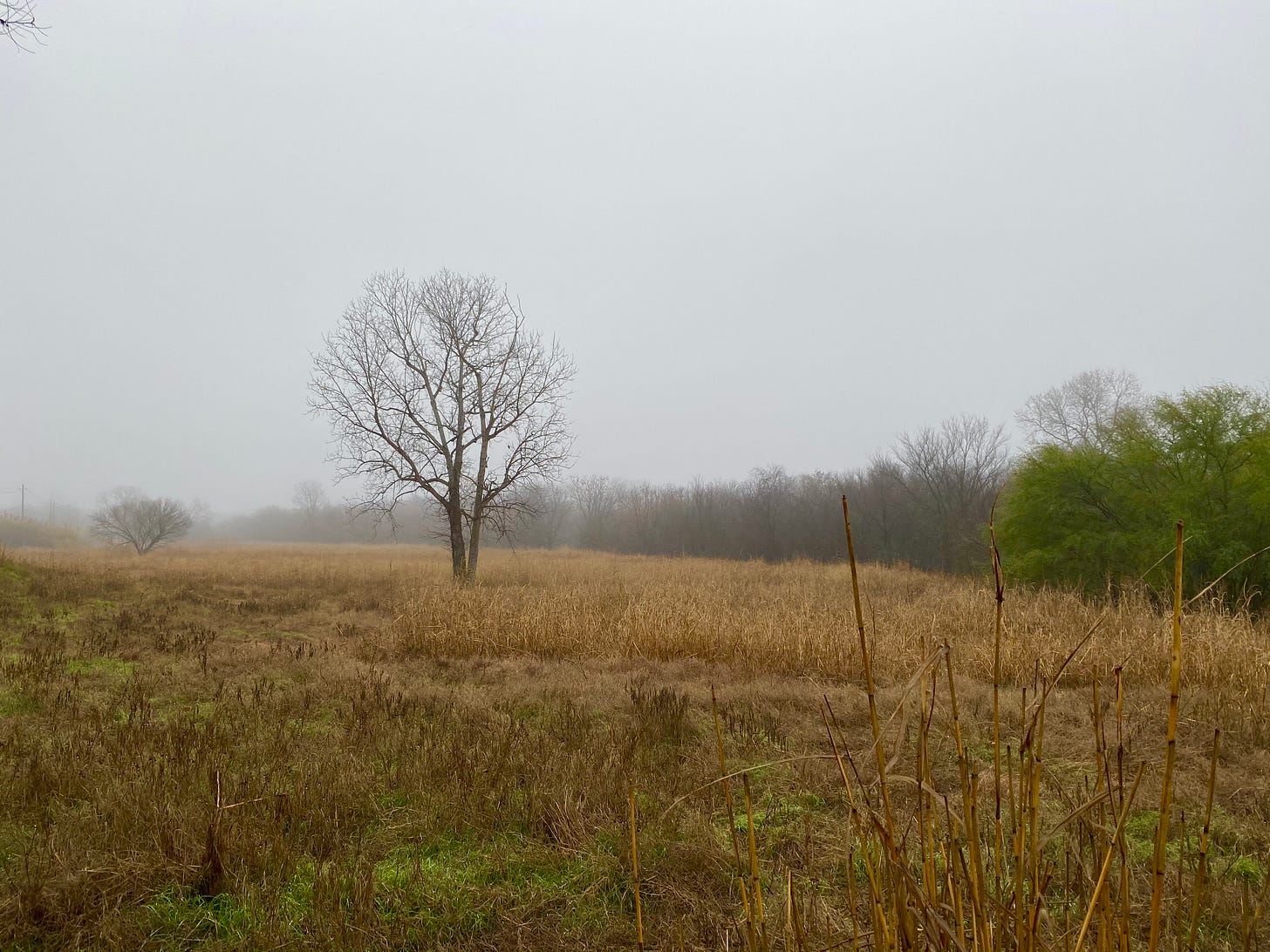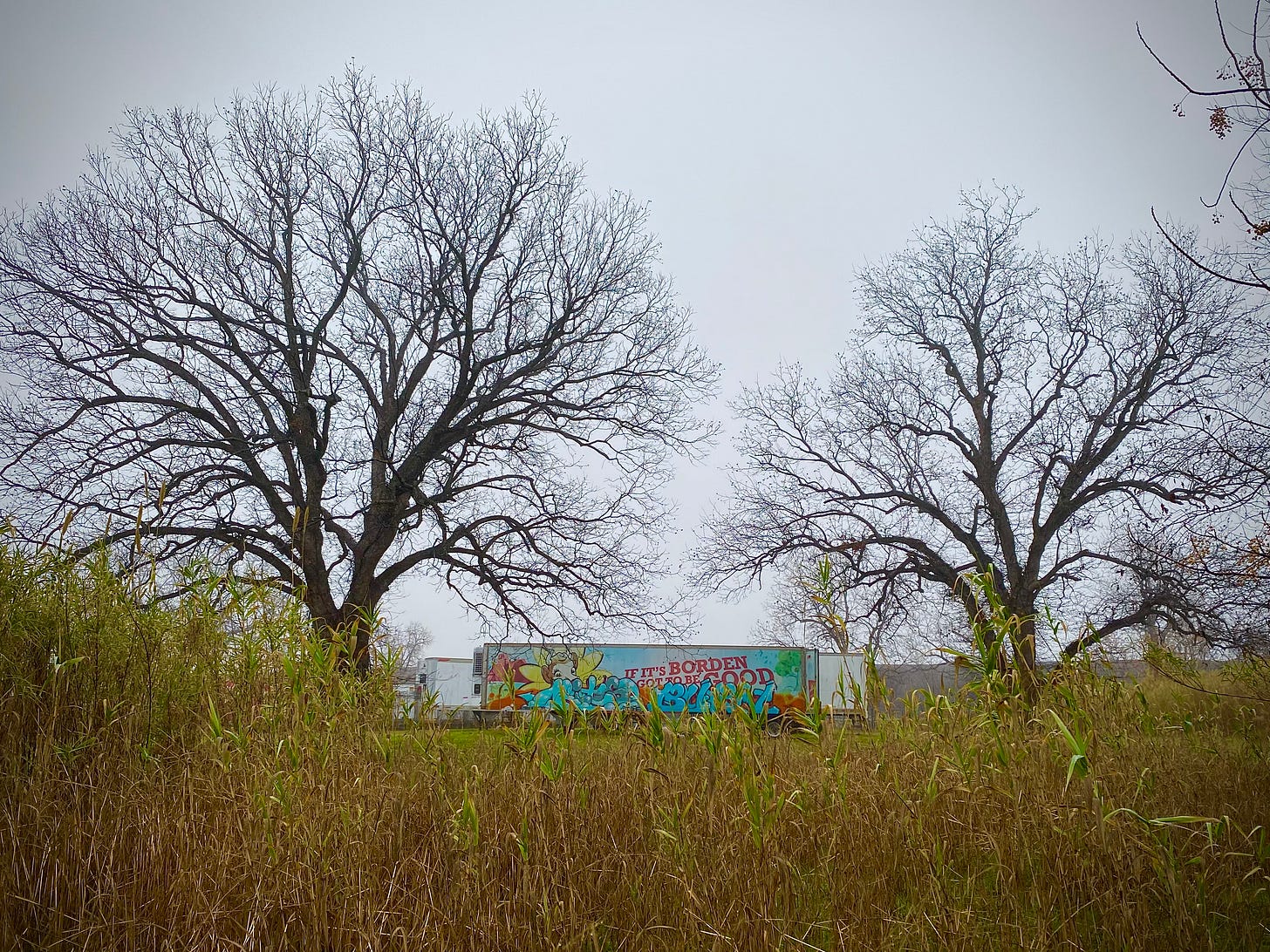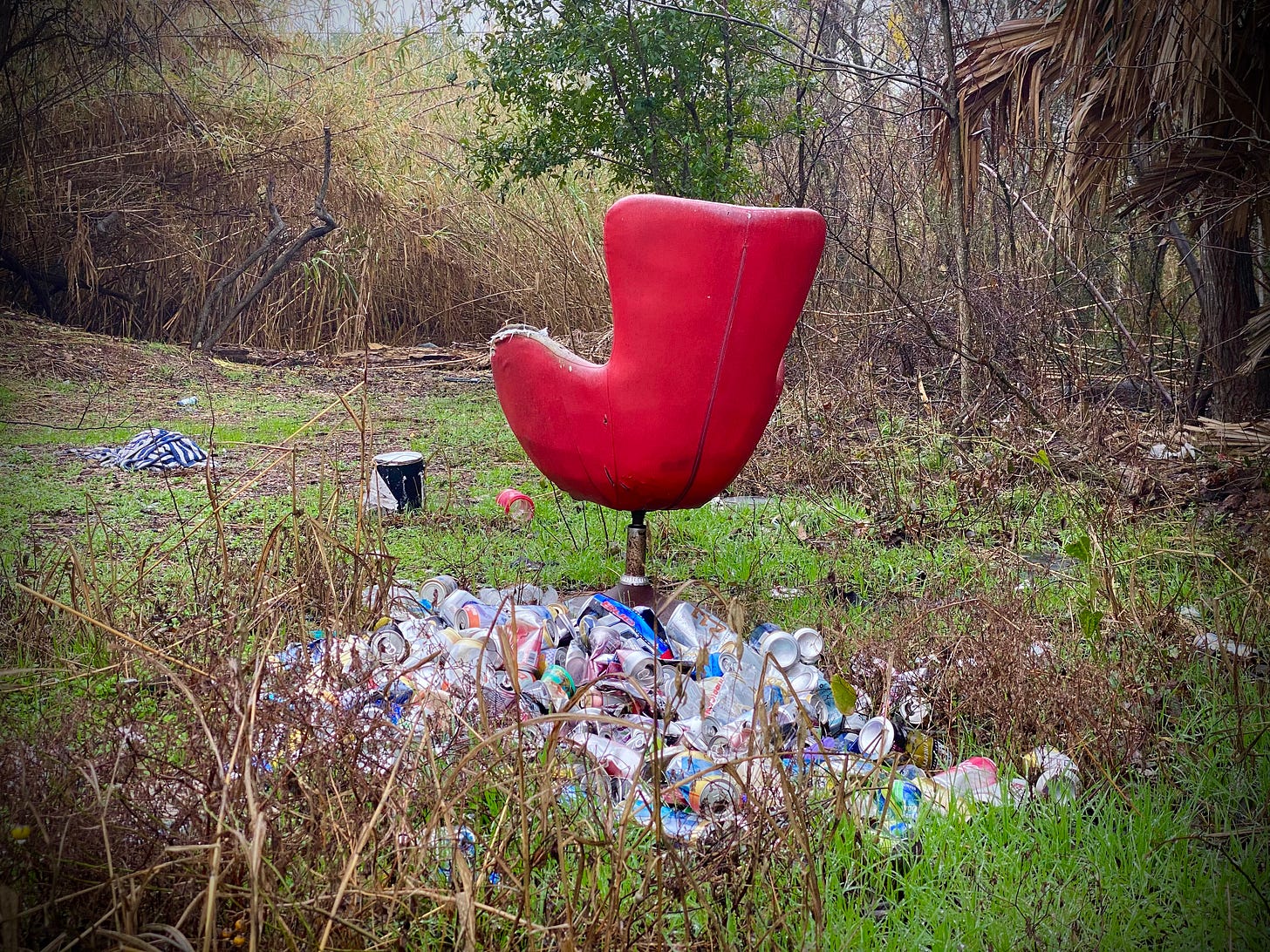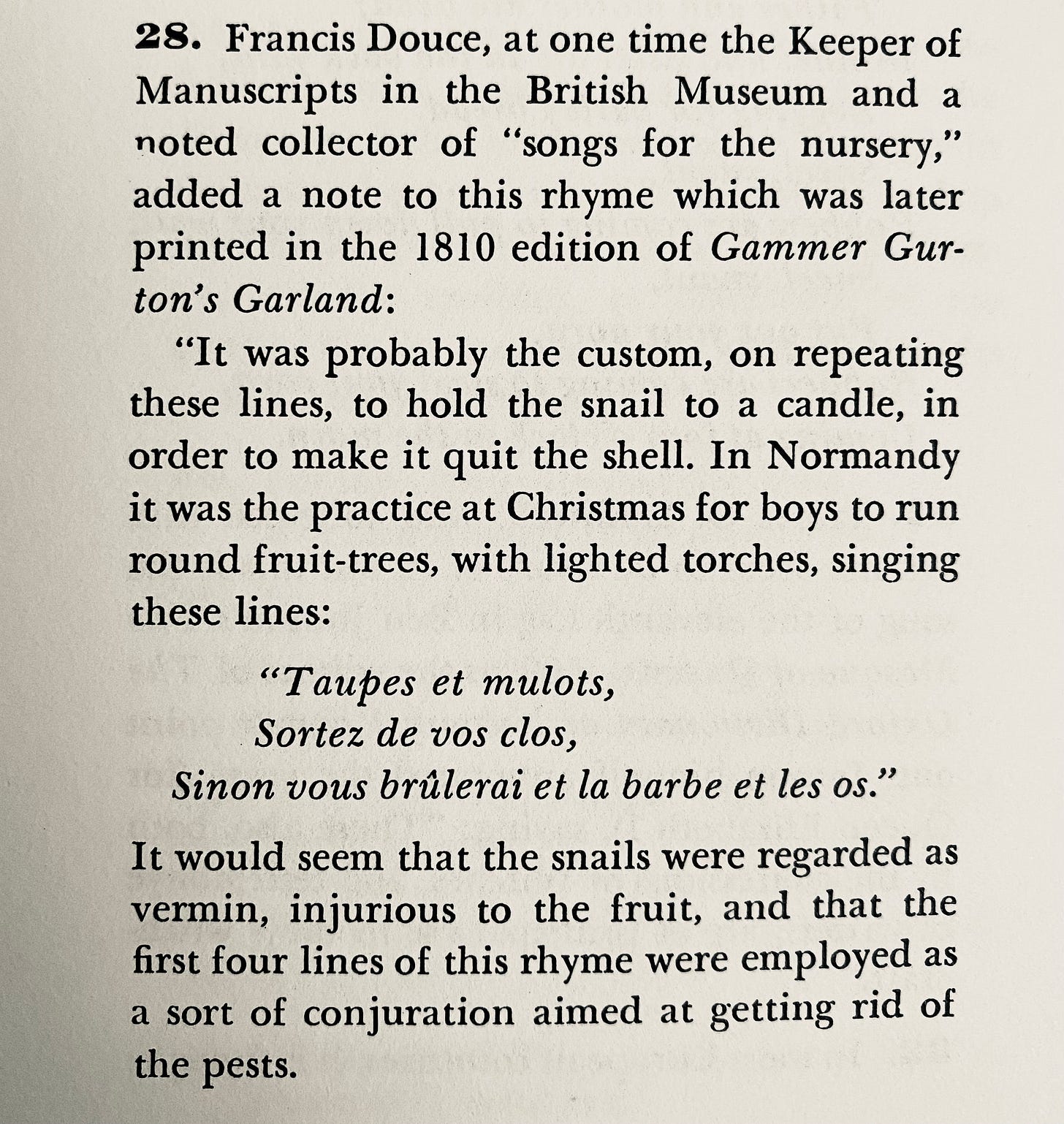Roadside picnics
Thursday morning when we got back from walking the dogs down past the gas tank yards and back, we came upon a bird I have never seen, flitting around at our front gate. One of those ordinary little brown songbirds you might not even notice, but when you looked at this one it flashed a spiky red crown on its head, like a sparrow dressed up for a Flock of Seagulls video.
It hung out for a minute, foraging under the Monterey oak and then snacking on some grub while perched on the chain link. Not long enough for a picture, and maybe that’s just as well. It was with at least one other bird that looked to be the same species, but without the red cap. Ruby-crowned kinglets, apparently, the male of which is the one with the crown, which he only rarely shows off the way he did for us (probably to ward off our dogs). “Macho in Anchorage” reads the caption below his portrait on the Spanish-language Wikipedia page, and I believe it.
The Reyezuelo rubí is one of many species who pass through here after the winter solstice, but won’t really get their macho on until they reach their summer breeding grounds in the deep pines of the continental north. Waxwings on Tuesday and warblers on Wednesday, tropical colors just barely showing up against gray skies as they fill the bare branches of the hackberry trees—branches that aren’t really bare for those who can enjoy the titular fruit still hanging after the leaves are long gone, a hard little berry that seems perfectly sized for tiny beaks. The hackberry is a tree mostly derided by urban foresters, who generally deem it a water hog that falls too often. But when you see examples like the tall groves we have here, growing up out of the trash-strewn bluff at the edge of town, and you see how many flocks of migrants they feed, you learn to love them.
I’m not sure what to think about the fact that our Canadian biker birds are rolling through a month earlier than usual. The early appearance of the waxwings could be due to the heavy winter weather that hit the Midwest this week, or it may evidence some deeper disequilibrium. Maybe they came to enjoy the ample winter rain we’ve been having, which has the spiderwort coming up early, too, providing a green delicacy for the herds of urban deer currently in a family way. This week I also saw the year’s first lizards out on the prowl, and a few butterflies along the woodland trails below the overpass, more certain signs that the warm weather is already here to stay.
Last Sunday morning it had stopped raining, and I took the dogs for a long walk along the line that divides the city and the urban woods, on the path of a long-abandoned road behind the construction supply warehouse and through the field behind the dairy plant, a spot that puts the park in industrial park. Whenever you walk through there, you can hear the life of the urban forest on one side and the machines that keep the milk cold and clean on the other.
At the far end of the field they have parked some older truck trailers outside the fence, the weird eyelash-batting face of the company’s lactating cartoon mascot stenciled on the sides and now overpainted with lush graffiti. Behind the trucks are the three-story-high stainless tanks that store the milk after it has been processed. A place that kind of hides in plain sight, especially when you think about what it is, a facility for harvesting the baby food of a species that has spent ten-thousand years as our slave. I wonder if you set Elsie and her sisters free, whether they would begin migrating like waxwings.
On the other side of the trucks I came upon the remains of the camps that sprung up last year in the zone between the industrial park and the nature preserve, back in the tall cane that grows along the loop road under the highway. We would see the guys emerging from there on summer mornings as we walked baby along the roadside path last year. There was one guy in particular who we saw several days a week, a middle-aged man who would strap an empty plastic water cooler onto his bike trailer to go fill it. Maybe he is the one who made the impressive shelter from wooden pallets and orange tarpaulin, so well-established that he left behind a suburban-grade propane grill.
I wonder where he went, and if it was the plant managers or the park police who evicted him and his neighbors. They or others will be back soon enough, just like the Texas Druid King, who also left signs of his visitation.
People who come walk this area with me often remark how it looks like a location from a Tarkovsky movie. They really mean one particular Tarkovsky movie, Stalker, which was shot mostly in and around abandoned Soviet-era industrial sites in Estonia. This week I downloaded the audiobook version of Roadside Picnic, the novel by Arkady and Boris Strugatsky from which the film was adapted, and listened to it while I ran through this place that feels like another one of the mysterious exclusion zones in which the book is set.
Roadside Picnic is one of those books I have had on my shelf for years and never really penetrated, maybe because of wariness that it could never live up to the enigmatic brilliance of the movie, even though the brothers wrote the screenplay. The differences turn out to be substantial, but in ways that suit the form. It helps that the audiobook is narrated by Robert Forster, the bad-ass actor of Medium Cool and Mulholland Drive, who gives the story a wiseguy character that’s not really manifest in the movie. Every other paragraph someone lights a cigarette or unscrews the top of a flask, while griping about the hassles of navigating a mutated landscape, and having to deal with other humans along the way.
The Stalker of both books is a post-industrial frontier scout who specializes in exploring a forbidden zone resulting from a mysterious alien visitation. The book opens with a prologue in the form of an interview with one of the scientists credited with discovering the secrets of the zones. “Dr. Pilman” explains our experience of the things the extraterrestrials left behind by analogy to how wild animals must experience our visits to their domain:
A picnic. Picture a forest, a country road, a meadow. Cars drive off the country road into the meadow, a group of young people get out carrying bottles, baskets of food, transistor radios, and cameras. They light fires, pitch tents, turn on the music. In the morning they leave. The animals, birds, and insects that watched in horror through the long night creep out from their hiding places. And what do they see? Old spark plugs and old filters strewn around... Rags, burnt-out bulbs, and a monkey wrench left behind... And of course, the usual mess—apple cores, candy wrappers, charred remains of the campfire, cans, bottles, somebody’s handkerchief, somebody’s penknife, torn newspapers, coins, faded flowers picked in another meadow.
A lot like this place, except here the animals seem to have mostly adjusted, in the same way they say dogs first acclimated to living with us by hanging out around the trash dumps at the edges of our camps.
Thursday night after dinner I heard the foxes going crazy out there in the woods behind the door factory, as the full moon lit up the evening sky above the power lines. Maybe they heard the people charged with such matters called this one the wolf moon, and thought they could show us why, even though, as I have remarked here before, vocalizing foxes sound like if cats could bark.
When I looked up at the moon, it was so bright that you could see the contrails of an overflying jet, as clear as the chalky pinstripe on a charcoal suit. The plane didn’t appear on the flight tracker, but it wasn’t an alien visitor. Just another agent of the state, patrolling the exclusionary zone we have made of the whole world. Unlike the aliens and the waxwings and the city’s involuntary nomads, it didn’t stop for a picnic.
Bourtree, bourtree, crooked rung
Last weekend baby and I went to get her cousin some birthday gifts at the used bookstore, a big place that is easy to navigate safely during pandemic, and that provides a different kind of foraging fun for both of us. She has gotten me looking though the weird things that end up on the vintage and collectible children’s shelf, and Sunday I found a keeper.
The Annotated Mother Goose is not really a children’s book, but a work of pop scholarship by William and Ceil Baring-Gould, compiling and annotating older versions of popular nursery rhymes. Reading them, one learns how many were not just for children, and how many were more like incantations. Most are aphoristic mnemonics about the natural world: sympathetic love magic conjured from animal sightings and found flowers, secrets of the trees encoded in their ancient names, and tons of weather wisdom. “The mackerel’s cry is never long dry,” for example, is a rain warning that riffs on “mackerel sky”—a sky full of cirrocumulus clouds.
Some of these children’s spells express the dark mischief of our manipulation of other species with a Gorey-like whimsy:
The annotation elaborates:
Lots of bargain copies floating around out there.
How to tour the Zone
If you have never seen Stalker, you may be lucky you waited, as the movie’s cult status among the cognoscenti resulted in a restored edition being released by the Criterion Collection in 2017. You can find the digital version on Criterion’s amazing streaming site, along with a bunch of great extras including interviews with Tarkovsky, composer Eduard Artemyev, and the English writer Geoff Dyer, who wrote an entire book about his experience of watching the film. There are aspects of the film that don’t hold up as well, making me wonder what a woman director would have done with this story. But it is one of the most beautiful movies ever made about our relationship with our environment, and one that tells more truth than any nature documentary, despite or maybe because of its science fictional framing.
There are many different editions of Roadside Picnic out there, in part reflecting the struggles the authors had with their censors. I can’t read Russian, but have read that the English translation by Olena Bormashenko for the 2012 Chicago Review Press edition (which also includes a foreword by Ursula K. LeGuin) is the best and most faithful. It’s available at Bookshop, and the only downside is the movie tie-in cover. That’s also the edition Robert Forster reads for the audiobook, perfect for driving around the pandemic zone like Harry Dean Stanton in Repo Man.
A footnote: Reading about the history of Elsie the Cow, who was invented as a brand image the same year my dad was born, I learned that she also had an equally creepy mate—Elmer the Bull. And that while Elsie was chained to the milk pump, Elmer became the glue we used as kids. No wonder so many of my classmates liked to eat it.
Have a safe week.















STALKER!!!😍😍😍